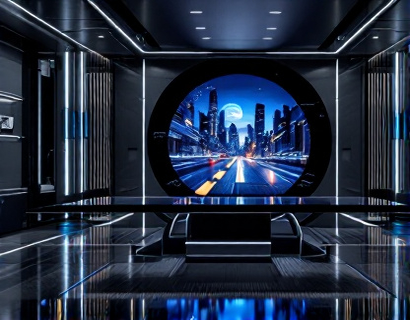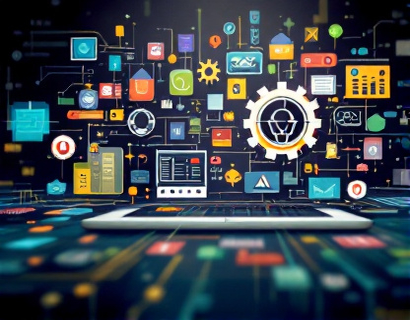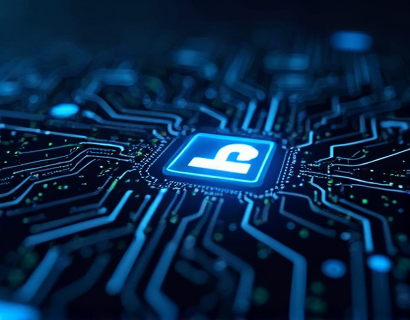Seamless AI and Blockchain Integration: A Business User's Guide to Digital Transformation Success
The integration of Artificial Intelligence (AI) and blockchain technology represents a pivotal shift in the landscape of digital transformation. For business leaders, navigating this integration can be complex but immensely rewarding. This guide serves as a comprehensive roadmap, offering actionable strategies to streamline operations, bolster security, and unlock new growth opportunities. By understanding the synergies between AI and blockchain, businesses can position themselves at the forefront of innovation, ensuring they remain competitive in an increasingly digital world.
Understanding AI and Blockchain
Before delving into integration strategies, it's essential to grasp the fundamental concepts of AI and blockchain. AI refers to the simulation of human intelligence processes by machines, particularly computer systems. These processes include learning (the acquisition of information and rules for using it), reasoning (using rules to reach approximate or definite conclusions), and self-correction. AI technologies such as machine learning, natural language processing, and predictive analytics are transforming industries by automating tasks, providing insights, and enhancing decision-making.
Blockchain, on the other hand, is a decentralized digital ledger technology that records transactions across multiple computers in such a way that the registered transactions cannot be altered retroactively. This technology ensures transparency, security, and immutability, making it ideal for applications requiring trust and traceability. Blockchain's distributed nature eliminates the need for intermediaries, reducing costs and increasing efficiency.
Synergies Between AI and Blockchain
The combination of AI and blockchain creates a powerful synergy that can drive significant business value. AI can process and analyze vast amounts of data stored on a blockchain, extracting meaningful insights and patterns. Conversely, blockchain can provide a secure and transparent environment for AI models to operate, ensuring data integrity and trust. This partnership enhances the capabilities of both technologies, leading to more robust and reliable solutions.
One key area where AI and blockchain intersect is in data management. Blockchain's immutable ledger ensures that data remains tamper-proof, while AI can optimize data storage and retrieval processes. For instance, AI algorithms can predict data access patterns and optimize blockchain storage, reducing costs and improving performance. This synergy is particularly valuable in industries like finance, supply chain, and healthcare, where data integrity and security are paramount.
Streamlining Operations with AI and Blockchain
Integrating AI and blockchain can significantly streamline business operations. One of the primary benefits is the automation of routine tasks. AI can automate data entry, contract management, and compliance checks, reducing manual effort and minimizing errors. Blockchain can provide a secure and transparent platform for these automated processes, ensuring that all transactions are recorded and verifiable.
For example, in supply chain management, AI can predict demand and optimize inventory levels, while blockchain can track the movement of goods from origin to destination. This combination ensures real-time visibility, reduces fraud, and enhances efficiency. Companies like Maersk and IBM have already implemented blockchain-based solutions to improve supply chain transparency and efficiency, with AI playing a crucial role in data analysis and decision-making.
Enhancing Security Through AI and Blockchain
Security is a critical concern in the digital age, and the integration of AI and blockchain offers robust solutions. Blockchain's inherent security features, such as cryptographic hashing and consensus mechanisms, make it resistant to tampering and cyber attacks. AI can further enhance security by detecting and responding to threats in real-time.
AI-powered security systems can monitor blockchain networks for unusual activities, identify potential vulnerabilities, and automate responses to mitigate risks. For instance, machine learning algorithms can analyze transaction patterns to detect fraudulent activities, while natural language processing can monitor and analyze communications to prevent phishing and other social engineering attacks. This dual approach ensures a multi-layered security framework, providing businesses with greater peace of mind.
Unlocking New Growth Opportunities
The integration of AI and blockchain opens up new avenues for growth and innovation. Businesses can leverage these technologies to create new products and services, enter new markets, and improve customer experiences. For example, in the financial sector, AI-driven trading platforms combined with blockchain-based smart contracts can facilitate faster, more secure, and cost-effective transactions. This can attract new customers and enhance existing relationships.
In the healthcare industry, AI can analyze medical data stored on a blockchain to provide personalized treatment recommendations, while ensuring patient data privacy and compliance with regulations. This not only improves patient outcomes but also opens up new revenue streams through data-driven services. Similarly, in the realm of intellectual property, blockchain can securely record and verify ownership of digital assets, while AI can manage licensing and royalties, creating new business models and revenue sources.
Implementing AI and Blockchain Integration
For businesses looking to integrate AI and blockchain, a strategic approach is essential. Here are some key steps to consider:
- Conduct a thorough assessment of your current operations and identify areas where AI and blockchain can add value. Focus on processes that are repetitive, data-intensive, or require high levels of security.
- Develop a clear roadmap that outlines the integration goals, timelines, and resources required. This roadmap should include pilot projects to test and validate the integration before scaling.
- Invest in the necessary infrastructure and talent. This may involve upgrading IT systems, hiring experts in AI and blockchain, or partnering with technology providers.
- Ensure compliance with regulatory requirements. Both AI and blockchain are subject to various regulations, and it's crucial to navigate these landscapes to avoid legal issues.
- Foster a culture of innovation and continuous learning. Encourage employees to explore new technologies and stay updated on industry trends.
By following these steps, businesses can successfully integrate AI and blockchain, reaping the benefits of enhanced efficiency, security, and growth.
Case Studies and Best Practices
Examining real-world examples can provide valuable insights into the successful integration of AI and blockchain. One notable example is the use of blockchain for supply chain transparency by Walmart. By implementing a blockchain-based system, Walmart can track the origin and journey of food products, ensuring safety and reducing waste. AI algorithms analyze the data to optimize inventory and predict demand, further enhancing operational efficiency.
Another example is the financial services firm JPMorgan Chase, which uses a blockchain platform called Interbank Information Network (IIN) to facilitate real-time transaction processing. AI is employed to analyze transaction data, detect anomalies, and automate compliance checks, reducing the risk of fraud and improving service delivery.
Best practices from these case studies include:
- Start small with pilot projects to test the integration and gather data.
- Collaborate with technology partners and industry experts to leverage their knowledge and resources.
- Focus on user experience and ensure that the integrated system is intuitive and efficient.
- Continuously monitor and evaluate the integration's impact, making adjustments as needed.
These practices can help businesses navigate the integration process and maximize the benefits of AI and blockchain.
Conclusion
The integration of AI and blockchain represents a transformative opportunity for businesses aiming to thrive in the digital age. By understanding the synergies between these technologies and implementing strategic integration plans, companies can streamline operations, enhance security, and unlock new growth opportunities. As the digital landscape continues to evolve, embracing AI and blockchain will be crucial for staying competitive and innovative. This guide serves as a starting point for business leaders to embark on their digital transformation journey, armed with the knowledge and strategies needed to succeed.










































